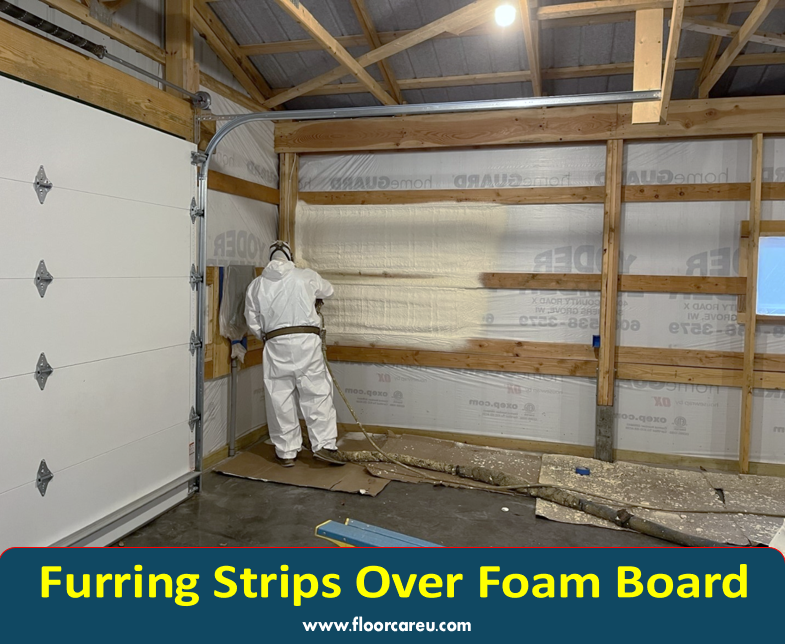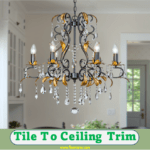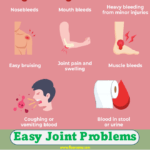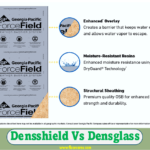Furring Strips Over Foam Board: Furring strips over foam board provide a framework for attaching finishing materials to the insulated surface, such as drywall or siding. This method also ensures a level and even surface for mounting these materials.
In locations with extreme temperatures like Austin, Texas, this insulation technique can improve energy efficiency and regulate indoor climate, making it a popular choice for homeowners seeking to reduce heating and cooling costs. Additionally, the furring strips help create an air gap between the insulation and the finishing material, providing added protection against moisture and mold.
Whether used in basements or on exterior walls, the proper installation of furring strips over foam board can significantly enhance the comfort and resilience of a home.

Benefits Of Furring Strips Over Foam Board
When it comes to insulating your walls, furring strips over foam board can offer several benefits that make them a popular choice among homeowners. Some of the key advantages include improved energy efficiency, moisture control, and enhanced structural support. Let’s delve into each of these benefits in detail below.
Improved Energy Efficiency
Furring strips create an air gap between the foam board and the wall, reducing thermal bridging and improving overall energy efficiency. This helps maintain a consistent indoor temperature and decreases the workload on heating and cooling systems, leading to potential energy savings.
Moisture Control
Furring strips help prevent moisture buildup and potential mold and mildew growth behind the foam board by allowing for proper ventilation and drainage. This can contribute to sustaining the integrity of the wall insulation and protecting the building’s structural components from water damage.
Enhanced Structural Support
The installation of furring strips provides a stable base for attaching various finishes, such as drywall or siding, ensuring a secure and durable wall assembly. This adds strength and rigidity to the overall structure, enhancing its ability to withstand external forces and maintaining long-term structural integrity.

Installation Process
Installing furring strips over foam board is a crucial step in the insulation process for basement walls. Begin by cutting insulation sheets and then securely affixing the furring strips. This method provides a sturdy base for finishing materials like drywall or siding.
Preparing The Surface
Before starting, ensure the surface is clean and dry.
Attaching Furring Strips
Secure the furring strips using appropriate fasteners.
Installing Foam Board Insulation
Place the foam board in position, cutting to fit tightly against the furring strips.
Best Practices
Choosing The Right Materials
When it comes to furring strips over the foam board, choosing the right materials for the job is essential. The most common material for furring strips is wood, with pine or cedar being popular choices due to their durability and resistance to pests. However, metal furring strips can also be used if you prefer a more lightweight and fire-resistant option. Regardless of the material you choose, it is crucial to ensure that it is compatible with the foam board and can provide sufficient support for the exterior siding or finishes.
Ensuring Proper Ventilation
Proper ventilation is critical when using furring strips over foam board. This is because the foam board can create a vapor barrier, preventing moisture from escaping and potentially leading to mold or rot. To prevent this, it is essential to create an airspace between the foam board and the siding or finishes. This can be achieved by using vertical furring strips that allow for air circulation behind the insulation. Additionally, installing a breathable membrane or using ventilation products specifically designed for this purpose can help maintain a healthy and moisture-free environment.
Addressing Potential Challenges
While furring strips over foam board can provide numerous benefits, there are some potential challenges to be aware of. One common issue is maintaining a level and even surface for the siding or finishes to be installed. This can be addressed by properly spacing and securing the furring strips, ensuring they are level and straight. Additionally, it is crucial to address any existing moisture or water intrusion issues before installing the foam board and furring strips to prevent further damage. Regular inspections and maintenance are also essential to identify and address any potential issues that may arise.
Comparative Analysis
Comparative Analysis: Furring Strips Over Foam Board vs. Traditional Insulation
Furring Strips Vs. Traditional Insulation
When it comes to insulating your basement walls or other exterior surfaces, you have a choice between two popular methods: furring strips over foam board or traditional insulation. Each method has its advantages and considerations that you should keep in mind before making a decision.
Long-term Cost-effectiveness
One of the key factors to consider when deciding between furring strips over foam board and traditional insulation is the long-term cost-effectiveness. Both methods have different upfront costs and potential energy savings.
Traditional insulation:
- Traditional insulation, such as fiberglass or mineral wool, is a common choice for many homeowners. It is relatively affordable and easy to install, making it a popular option for DIY projects.
- However, traditional insulation may require additional materials, such as vapor barriers and air sealing, to achieve optimal performance. These additional materials can increase the cost and complexity of the project.
- Traditional insulation can provide good thermal resistance in terms of energy savings, but it may not be as effective in reducing air leakage or preventing condensation build-up.
Furring strips over foam board:
- Furring strips over foam board, on the other hand, offer several advantages in terms of long-term cost-effectiveness. Although the upfront cost of materials may be higher compared to traditional insulation, the energy savings can offset these expenses over time.
- Furring strips combined with foam board insulation provide a continuous insulation layer with fewer air gaps, reducing thermal bridging and improving the overall energy efficiency of your building envelope.
- Additionally, furring strips can also act as a moisture barrier, helping to prevent condensation and mold growth. This added protection can lead to improved indoor air quality and reduced maintenance costs in the long run.
Conclusion:
In conclusion, both furring strips over foam board and traditional insulation have their own merits and considerations. If long-term cost-effectiveness and improved energy efficiency are your primary concerns, furring strips over foam board may be the better option. However, it is important to evaluate your specific project requirements, budget, and local building codes before making a final decision.
Frequently Asked Questions For Furring Strips Over Foam Board
Can You Put Osb Over the Foam Board?
Yes, you can install OSB over foam board as a form of insulation for walls. This method provides additional support and enhances insulation efficiency. Installing OSB over the foam board, followed by Tyvek and siding, is a commonly adopted procedure. Applying multiple layers from the inside out ensures optimal insulation.
How Do You Attach Wood To Foam Board?
To attach wood to foam board, use construction adhesive for a strong bond. Apply the adhesive evenly to the contact surfaces, then press firmly together for a secure attachment.
What Do You Cover Foam Board Insulation With?
You cover foam board insulation with materials such as vinyl siding, drywall, or fiber cement board. Moreover, furring strips are commonly used to provide a surface for attaching these coverings to the foam board. Additional materials like OSB and plywood can also be used when insulation is required.
Can You Put Drywall Over Foam Board?
You can put drywall over foam board by adding a layer of ½” drywall or an approved thermal barrier.
Can I Install Furring Strips Over Foam Board Insulation?
Yes, you can install furring strips over foam board insulation to provide a secure surface for siding or drywall installation.
How Do I Attach Wood To Foam Board Insulation?
You can use adhesive specifically designed for foam board to attach wood to foam board insulation securely.
Conclusion
Utilizing furring strips over foam board for insulation presents a valuable solution. It enhances energy efficiency and provides a sturdy base for various exterior finishes. By adhering to proper installation methods, this approach can significantly improve the thermal performance of structures.
Explore the benefits today.


